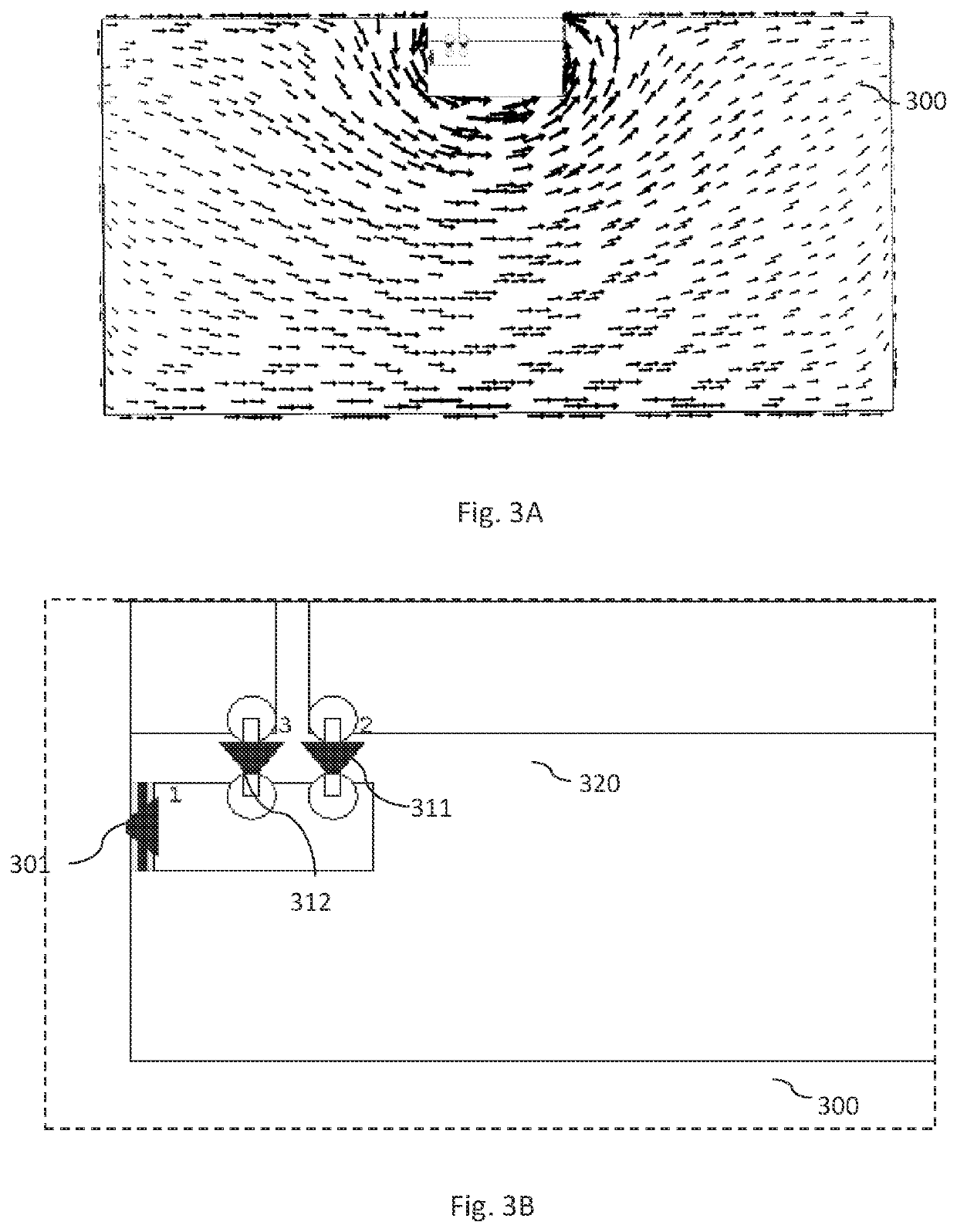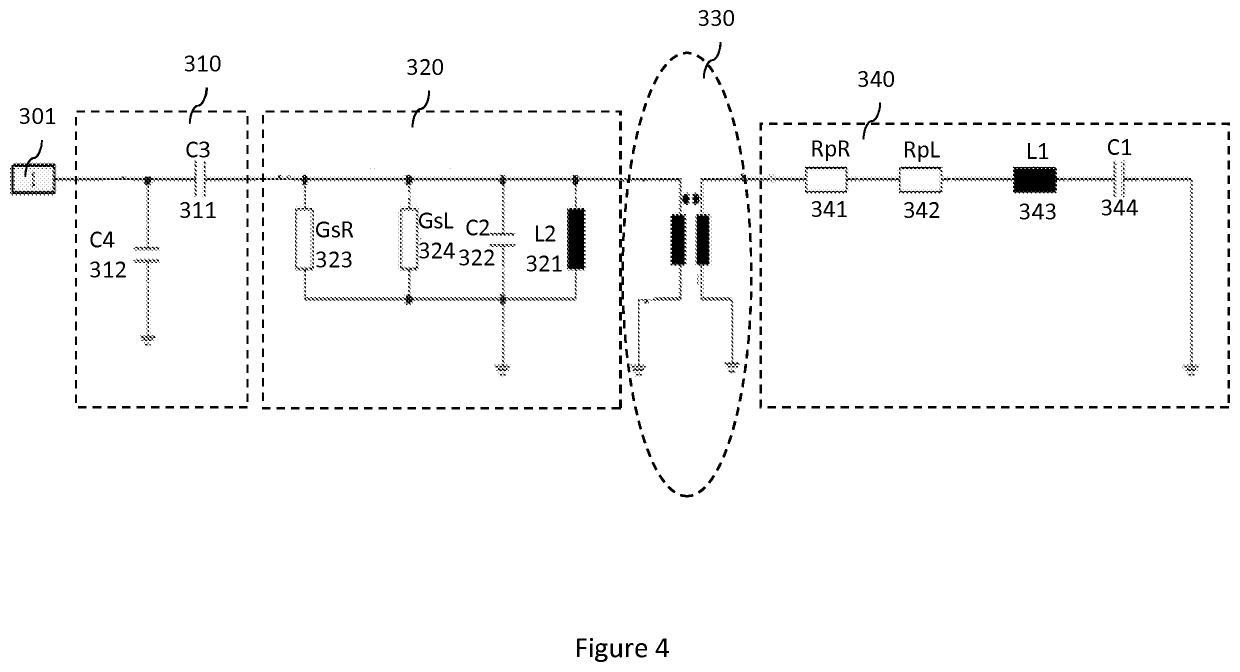Capacitor structure and a chip antenna
a capacitor and chip technology, applied in the direction of solid-state devices, basic electric elements, structural forms of radiating elements, etc., can solve the problems of large tolerances of capacitor capacitance values, poor capacitance value accuracy, and inability to individually select capacitors in mass production, so as to improve capacitance and reactance tolerance of capacitors, reduce losses, and effectual
- Summary
- Abstract
- Description
- Claims
- Application Information
AI Technical Summary
Benefits of technology
Problems solved by technology
Method used
Image
Examples
third embodiment
[0093]FIG. 11 is a schematic cross-sectional view of the invented capacitor structure. This structure is based on that of FIG. 6, with T-shape cross section of electrode fingers, but the entire structure has further been mirrored with respect to the metallization layer (504) that forms the lateral part (600b) of one set of the electrode fingers, i.e. arms of T-shapes of one set of electrode fingers.
[0094]In this example, there are pairs of positive electrode fingers that have their superimposed lateral parts (600a), i.e. arms of the T-shapes, on two opposite faces of the capacitor structure and their vertical parts (601a), i.e. stems of the T-shapes pointing in opposite vertical directions towards each other. Between the rows of pairs of positive T-shaped electrode fingers there are negative electrode fingers that have a single lateral part (600b) and two vertical parts (601b) pointing in opposite directions. Lateral part (600b) of the negative electrode finger is partially superimp...
fourth embodiment
[0097]FIG. 12 is a schematic cross-sectional view of the invented capacitor structure. This structure is based on that of FIG. 9, with inverted L-shape cross section of electrode fingers, but the entire structure has further been mirrored with respect to the metallization layer (504) that forms the lateral part (600b) of one set of the electrode fingers, i.e. legs of L-shapes of one set of electrode fingers.
[0098]In this example, each positive electrode finger has two superimposed lateral parts (600a), i.e. legs of the L-shapes, on two opposite faces of the capacitor structure and a vertical part (601a) coupling the two lateral parts (600a) together. Negative electrode fingers have a single lateral part (600b) and two vertical parts (601b) pointing in opposite directions. Lateral part (600b) of the negative electrode finger is partially superimposed with the lateral parts (600a) of the adjacent positive electrode finger.
[0099]This kind of structure may be beneficial, if there is a h...
PUM
| Property | Measurement | Unit |
|---|---|---|
| electrically conducting | aaaaa | aaaaa |
| vertical distance | aaaaa | aaaaa |
| width | aaaaa | aaaaa |
Abstract
Description
Claims
Application Information
 Login to View More
Login to View More - R&D
- Intellectual Property
- Life Sciences
- Materials
- Tech Scout
- Unparalleled Data Quality
- Higher Quality Content
- 60% Fewer Hallucinations
Browse by: Latest US Patents, China's latest patents, Technical Efficacy Thesaurus, Application Domain, Technology Topic, Popular Technical Reports.
© 2025 PatSnap. All rights reserved.Legal|Privacy policy|Modern Slavery Act Transparency Statement|Sitemap|About US| Contact US: help@patsnap.com



